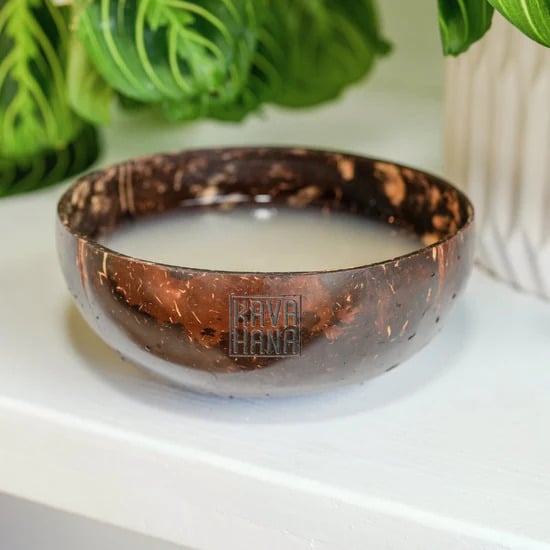As with many natural products, there is often the question of whether or not kava is safe for young people to use. This is a challenging question due to the differences between what Western doctors say and our anecdotes from people who have used these medicines for centuries.
There is very little research on kava in general and no research (that I could find) on kava use with children and teens. This makes it difficult to definitely say whether it’s safe or not.
One big consideration often overlooked is the type of kava being used. You can find many different kava options these days. Extracts and supplements can usually be found in your local health food store. While they may be helpful, they also contain additional and unknown or unwanted ingredients that can have negative side effects. These may also interact badly with other medications or substances being used.
Traditionally, using kava as a tea is the best and most natural way to use kava. It includes dried kava root with all the benefits without additional ingredients. A great example is our Kava Nectar.
To understand the data for whether or not kava is safe in kids under 18, we need to look at how kava works in the brain, its psychoactive nature, and its modern and traditional uses.
How kava works in the brain
Kava is made up of active ingredients called kavalactones. Small chemicals play a major role in how kava makes us feel. We know of 18 kavalactones, but only six have been linked to 96% of kavas effects.
Kava works in the brain by acting on certain neurotransmitters. Neurotransmitters are the chemical messengers that communicate signals from your brain to different body parts. The GABA system is inhibitory, making you feel relaxed and calm when activated. Kavalactones act directly on the GABA system. This increases the amount of GABA in your brain, giving you the calming and refreshing effects kava is known for.
Kava is considered a psychoactive substance because it affects how your brain works. While psychoactive substances can alter our feelings, they are not necessarily psychedelic; unlike psychedelics, kava does not cause hallucinations or drastically change perceptions. The key difference is in how the kavalactones work in the brain. They can gently change our mood without impairing cognitive abilities, unlike many other drugs and substances.
Psychoactive substances and teens
Many people don’t realize that our brains aren’t fully developed until we’re in our mid-20s.
This means that as we grow, our brains are particularly susceptible to what we consume. This includes everything from our diet and what we eat to the substances we use.
Our teens and early 20s are usually when we gain more independence and start experimenting with substances like drugs and alcohol. While it’s natural to want to explore, too much can negatively affect the developing brain.
Young people are more susceptible to the effects of psychoactive substances and, therefore, can feel the effects of kava more strongly, having a more significant effect in their bodies and brains.
So even though kava doesn’t impact our brains and bodies in the same way as other substances, some say that its psychoactive nature needs to be considered when it comes to kids and teens.
The great debate
As with so many kava-related topics, there is much debate on whether or not kava is safe for younger people to use. The general consensus from Western medicine appears to be that kava is not recommended. Much of this comes from the lack of research on the topic, so we just don’t know what the long-term effect of young people using kava could be.
Historically, kava was considered a “dietary supplement”; however, it was designated as a food earlier this year by the state of Hawaii. Adults and children have used it for generations in the South Pacific. It’s also legal to use and considered safe to use in the US. The biggest challenge with this label is that most safety research has been done in adults.
Since it is known to be safe for adults over 18, it might seem logical to assume that it would also be safe for children, particularly because many parents already use natural supplements with their kids. Indeed, back in 2012, nearly 12% of children in the US were using some form of complementary or natural medicine, which is sure to have increased since then.
Even though kava has traditionally been used in children in the South Pacific for many years to help with sleep, teething and other minor ailments current doctors in Hawaii generally don;t recommend using kava for children. They say kava was probably used because it was the only remedy available in their remote locations and recommend waiting to introduce kava until teens are 14-15 years old. They said this wasn’t due to any particular danger kava poses but simply that children’s bodies and minds are still developing.
Unfortunately, as you can see, there is no general opinion on whether kava is safe for young people. As with any natural product, it’s important to talk to your child’s doctor before using it to understand their perspective and the condition you are trying to treat.
If you decide to give your child or teen kava, start with a very small dose to see how they tolerate it and only use it once or twice a week.
* Please note that the majority of kava research pertains to kava extracts, which often undergo significant processing and may contain additional ingredients and fillers that can influence their efficacy. It is crucial to consider this distinction when reading about kava studies. To draw an analogy, enjoying natural kava as a beverage can be likened to experiencing a freshly brewed cappuccino, whereas kava extracts are akin in functionality to a caffeine pill. Both forms have their unique benefits and can cater to different preferences and needs. While it’s helpful to understand research on kava extracts, please view it critically and remember that natural kava offers a uniquely holistic experience.
Tags: is kava safe for kids, how old to drink kava, can kids drink kava, can kids have kava, how old do you have to be to drink kava, do you have to be 21 to drink kava, how old do you have to be to buy kava, is kava nectar safe, kava age limit, is kava tea safe, is kava safe, kava bar age limit, kava bar sf, kava cans, kava kava safe, kava nectar benefits, is kava tea safe to drink, kava safety, kava safe, kava nectar effects, kava canned drink, kava nectar side effects, kava in a can, kava nectar drink


